- Establishment of friendly cultivation module for cocoa seedlings
- Analysis of the arrangement of Nectar Plants under the Climate Change.
- Establishment of resilience cultivation practices by increase drought-tolerant of potato and ensure the production of leafy vegetables after typhoon destructed and rain disaster
- Research on Improving Agricultural Workers' Adaptation Strategies in Response to Climate Change: A Case Study of Agricultural Workers in Seedling production industries.
- Research on processing technology for reducing the waste of domestic agricultural production
- Establishment of techniques to reduce waste and create valueadded utilization of tomato seed processing by-producet and seasonal overproduced tomato.
- Establish the system of value-added utilization on pumpkin residues from seedling industry
- Development of value-added products from seeded papaya wastes
- Developement of eco-friendly nursery material technology
- Application of Herbal Medicine Plants in Animal Feed Additives and Establishment of GAP Production System.
- Construction and promotion of organic demonstration nursery
- Study on the development and industrial value of biochar which made by used media of mushroom
- Development of disinfection technique for important seed-borne pathogens of vegetables
- Research and application of value-added and waste reduction technology in green supply chain
- Construction of Intelligent Production and Sale Management Network for Vegetable Nursery
- Establishment of physiological parameters and production operation mode for vegetable nursery
- Modular development and application of production management information system in plant tissue culture
- The establishment of high through-put sequencing workflow to detect pathogens of tomato seeds
- Establishment of organic seed production and supplying system for grain crops
- Using seed priming treatment to promote crop stress tolerance and survey industry status
- Establishment of highly effective isolated facility for healthy seedling
- Development and application of molecular markers for the important traits of Solanaceae crops
- Development of potyvirus resistance in melon using CRISPR/Cas9 technology
- The Study of Healthy Seedling Production by In-vitro Micropropagation
- Research on optimization of detecting operation procedure for seed-borne pathogens
- Study and improvement of strengthening seed testing technology
- Strengthen Plant New Variety DUS Testing Techniques and Research on Genetic Resources Management and Application of the Potential Crops in Taiwan
- Breeding and key techniques research on orchids and bulb flowers
- Breed and assess the drought tolerance rootstocks with cucumber
- Breeding for disease resistant tomato and superior quality eggplant.
- Breeding for environment tolerance and high quality of Cucurbitaceae vegetables.
- Breeding of high quality papaya varieties with international competitiveness
- Establishment of environmentally friendly seed production system for grain crops
- Establish a digital platform for seed illustration
- Establishment of automatic seedling evaluation system and integration of seed testing platform
- Intelligent Marketing and Promotion of Seedling Production and Marketing Information Management System.
- Establishment of Phalaenopsis Varieties Identification and Application Integration Platform
- Research on the Integrated Planning and working tendency analysis for the seedling training courses in Farmers' Academy.
- Harmonization and Cooperation on DUS testing between Taiwan and Japan
- Taiwan-Israel Plant Variety Protection Cooperation and Study on DUS Testing
- Enhancing the seed testing technical cooperation with ISTA and new southbound countries
- Establishment of inspection and monitoring system for new era genetically modified organisms
- Study of inspection acts for imported genetically modified feed and industrial applications traceability and export agricultural products
 Home > Achievement > 2020 Research Project List > Study on the development and industrial value of biochar which made by used media of mushroom Home > Achievement > 2020 Research Project List > Study on the development and industrial value of biochar which made by used media of mushroom |
Study on the development and industrial value of biochar which made by used media of mushroom
The waste mushroom media biochar were added to the medium of vegetable nursery to test the growth of seedlings this year. The results showed that the 2% and 4% waste mushroom media biochar were better in the cauliflower seedlings. In sweet pepper seedlings, the addition of 4% and 6% of the waste mushroom media biochar performed better. Based on this, the formula for plug seedling cultivation should be gotten on.
Three kinds of biochar materials, rice husk charcoal, fruit tree charcoal, and waste mushroom media biochar, were used as soil modifiers for sweet corn and fruit tree pear cultivation. The yield of sweet corn from high to low was 3% rice husk biochar, 2% rice husk biochar, 1% fruit tree biochar, 3% waste mushroom media biochar, and 2% waste mushroom media biochar. The yield of pear from high to low was 1% waste mushroom media biochar, 2% rice husk biochar, and 2% fruit tree biochar. The fruit weight and total yield of bitter gourd were the highest at 3% waste mushroom media biochar, followed by the control group, 2% and 1%.
Currently, more than 200 thousand metric tons of the waste media are produced each year, and they are accumulated continuously which occupies a lot of space and produces foul smell. And some illegal disposal seriously pollutes the environment and causes waste of resources.
This plan has established a prototype of a recycling mechanism, but the cost of making biochar is relatively high. It is necessary to develop carbonization treatment technology or expand the scale to reduce costs. Only by developing other value-added products can the utilization efficiency of waste mushroom media biochar be improved.
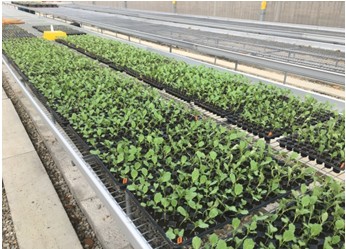 |
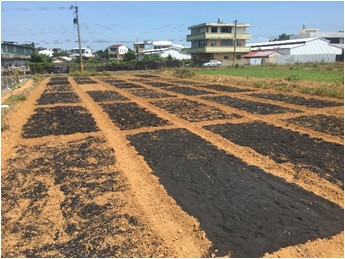 |
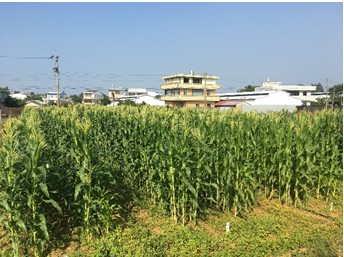 |
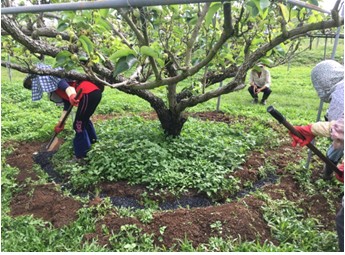 |
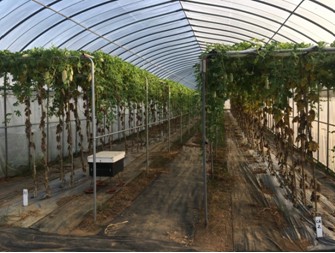 |
